PVC Kitchen Cabinets (Types & Pros and Cons)
In this guide to PVC kitchen cabinets you’ll find their design types, modern & modular PVC options, doors, finishes, cost, and how PVC cabinets compare to wood & melamine.
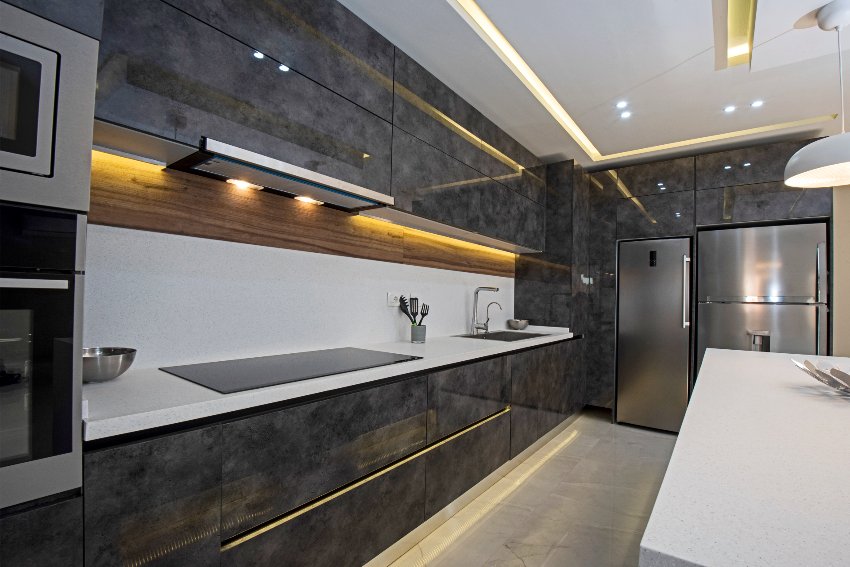
As prices of kitchen remodels are increasing, many homeowners are looking for inexpensive, and easier to install kitchen cabinet options. With the popularity of modular kitchens, there are an assortment of materials being used for cabinetry. We have observed a growing trend in interior design, which takes the form of PVC kitchen cabinets.
What Are PVC Cabinets?
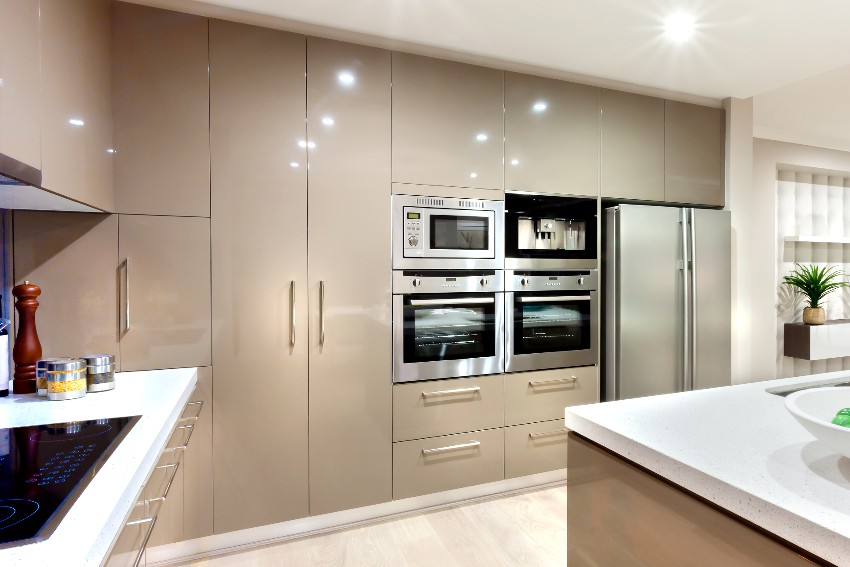
PVC kitchen cabinet materials are constructed with plastic composite sheets. The industry offers two types of PVC storage units: hollow boards and foam. The hollow board option is lighter, more inexpensive, and as the name implies, it is hollow. On the other hand, polyvinyl foam boards are thicker, making them more durable.
Pros and Cons of PVC Kitchen Cabinets
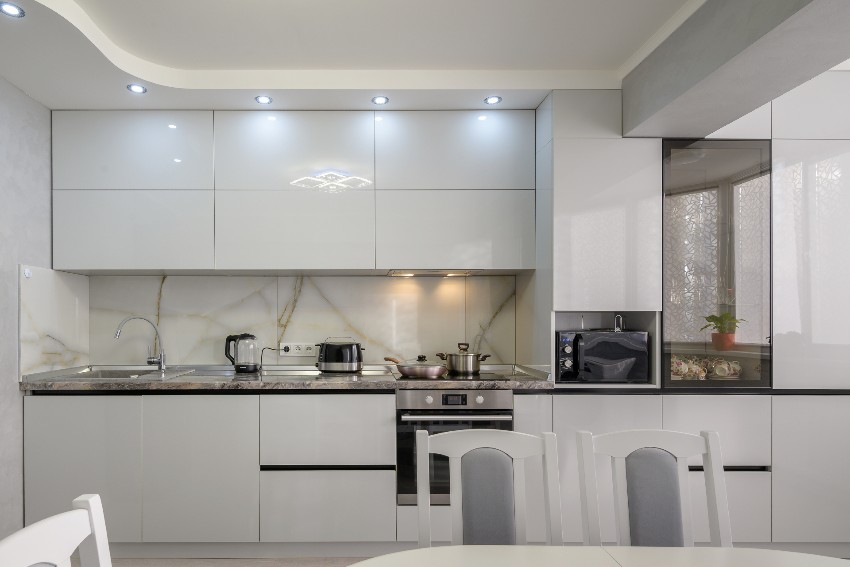
Pros of PVC Cabinets
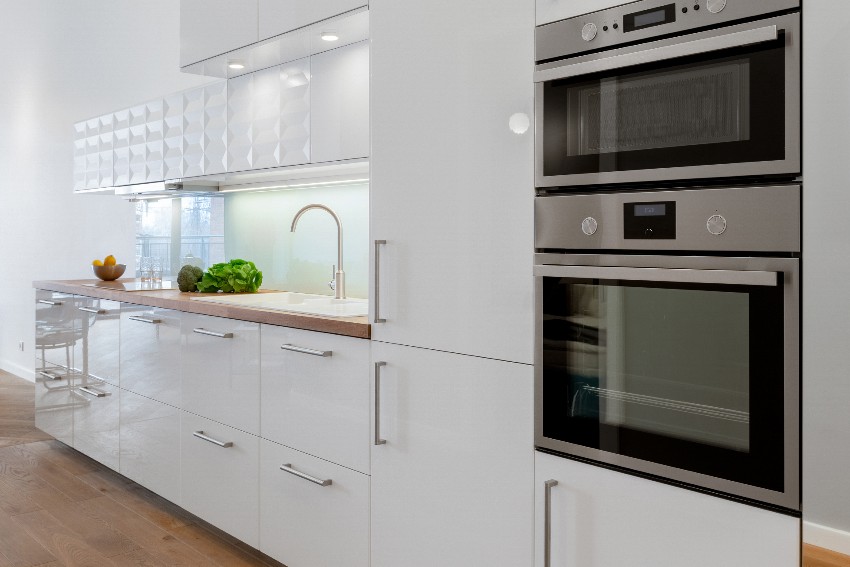
Simple to install – PVC material for cabinets is available in various colors and ready-made boards. These ready-to-fit boards are lightweight and straightforward to install in your kitchen.
Minimal maintenance – PVC, mostly made of plastic, can be cleaned up after spills or splatters. As a result of not absorbing liquids or oils, it is remarkably stain-resistant. Polyvinyl plastic cabinets are straightforward to clean and durable. As a result, polyvinyl plastic needs practically minimal maintenance.
Termite-resistant – You won’t have to worry about termites or insects ruining your cabinets if you use vinyl. Polyvinyl plastic cabinets are termite and rot-free since no wood is in their construction.

Lightweight – PVC materials are very light and manageable compared to natural wood cabinets’ weight. Comparatively speaking to traditional wood cabinets, transporting, setting up, and taking them out is a snap.
Cons of PVC Cabinets
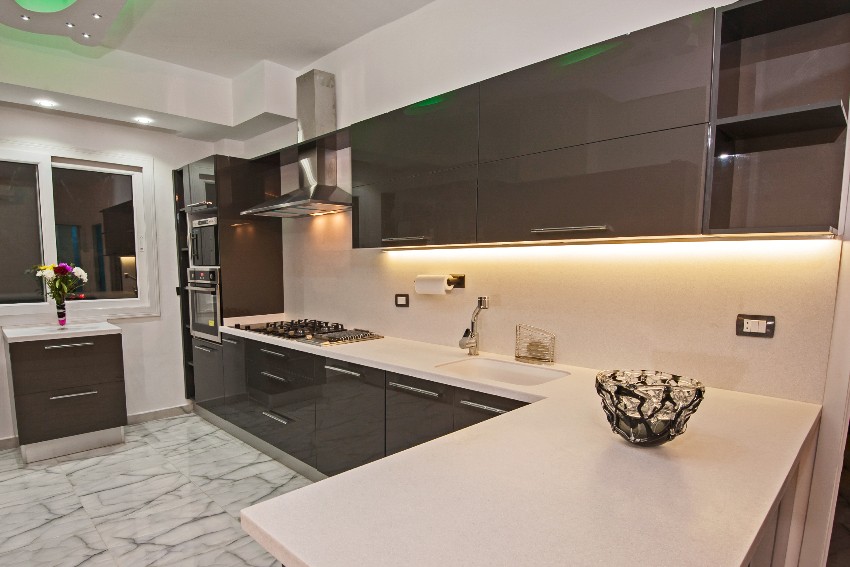
Low hardware compatibility – PVC boards are simple to install and operate, but their cabinet hardware can be challenging. These polyvinyl boards tend to droop over time due to the screws and hinges utilized to connect them. Thus, polyvinyl boards’ holding power is inferior to other materials like plywood or natural wood.
Low fire resistance – Cupboards made of vinyl resin board have poor thermal and fire resistance. As a result, you must take great caution while installing polyvinyl cabinets in your kitchen. PVC is less heat and fire-resistant than wood cabinets with sealant, especially in the case of hollow vinyl boards.
Prone to scratches – Since PVC cabinets are plastic, they are prone to scratches and cuts. A nick or split in vinyl plastic materials cannot be fixed and is permanent. You would need to replace the whole board if your PVC kitchen cabinet had a big scratch.
May droop with time – Regarding the durability of vinyl plastic kitchen designs, consider foam board over hollow polyvinyl resin since it can bear more significant weight. If not properly cared for or maintained, the harm might be irreparable.
Types of Designs for PVC Type Cabinets
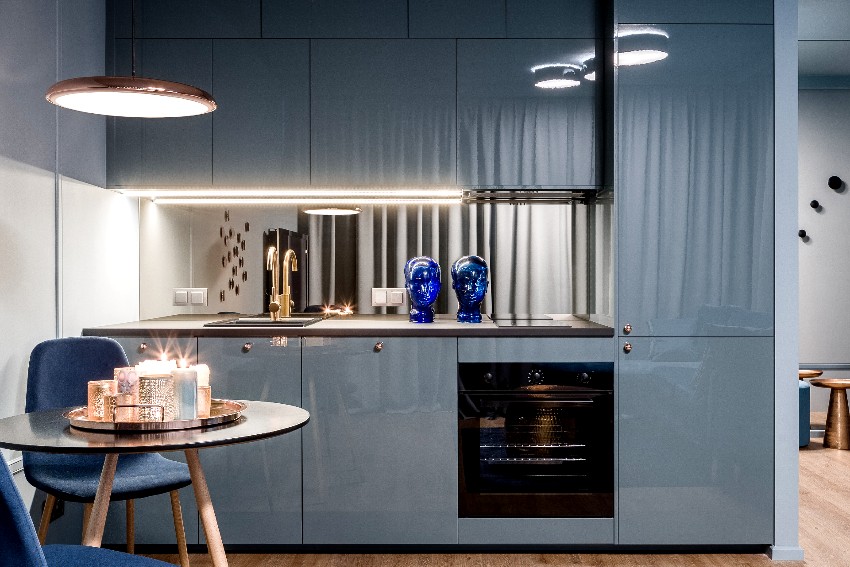
• PVC foam boards
• PVC hollow boards
As the name indicates, polyvinyl hollow boards are hollow inside, but polyvinyl foam boards are sturdier and thicker. While both forms of PVC material may have the same glossy/matte appearance, PVC hollow boards have limited heat resistance and can droop much too fast, owing to a lack of strength.
PVC hollow boards are exceedingly light and straightforward to install, but because of their lower durability, they work best for temporary construction. Foam polyvinyl boards rival even wood cabinets in terms of strength and longevity.
PVC hollow boards are lightweight and the more affordable choice between the two. Unfortunately, they are neither fire, termite, nor moisture-resistant and have limited heat resistance.
Although more costly, polyvinylfoam boards are heat-insulated and more robust than hollow boards. Foam board-based polyvinyl storage units are a superior alternative for your cupboards since they are more dependable and durable.
PVC Cabinet Doors
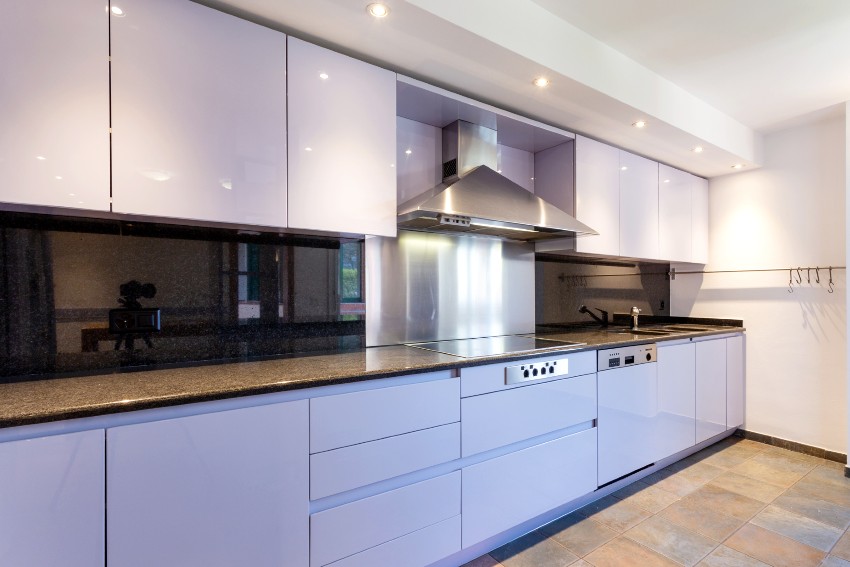
The lack of seams in the polyplastic cabinet doors has always been an advantage. Due to their reasonable pricing and attractive design, PVC cabinet doors are always in demand among homeowners and the kitchen cabinet door industry.
The PVC cabinet doors are easy to clean because of their seamless construction and smooth covering. Homeowners may rapidly clean them with a wet cloth or a Windex-like cleanser.
However, the vinyl-coated cabinet doors have the drawback of notwithstanding high-heat sources particularly well. These cabinet door manufacturers often have “tight” design guidelines that cupboard fabricators and suppliers follow when creating, selling, and installing cabinets.
Modern PVC Board Cabinets
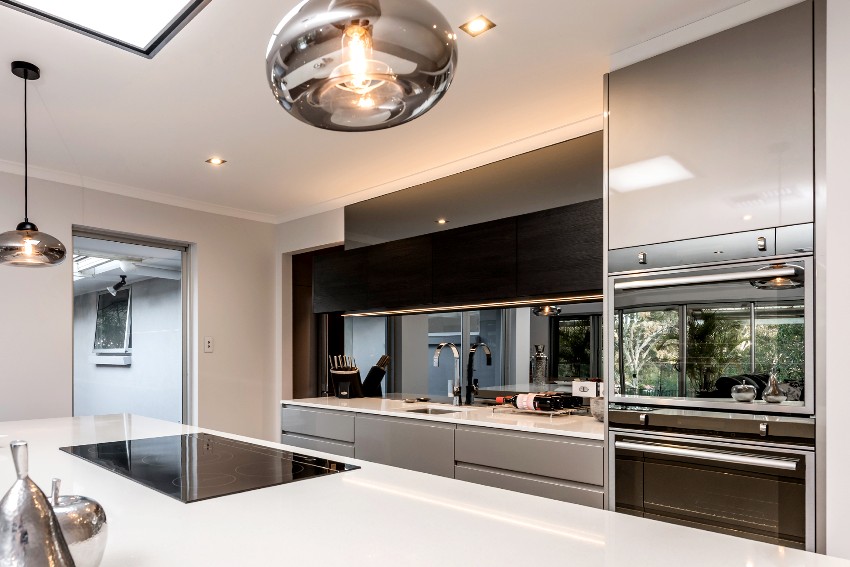
Here, the ornamental vinyl laminate surface finish is on top of a plywood-like material that serves as the primary cabinet’s construction. Polyvinyl laminates are sheets of laminate created by compressing PVC, thin layers of paper, and resin at high temperatures and pressures.
These laminates can bend 90 degrees and are pretty flexible. They may thus be utilized around edges for a seamless appearance without border banding. They are enduring and relatively simple to clean.
Modern polyvinyl laminates have matte, glossy surfaces resembling metal, stone, or wood. They resist termites, heat, rust, dampness, and corrosion. Laminate cabinets are more affordable, ideal for humid environments, and suitable for kitchen designs and cabinets.
PVC Modular Cabinets

Here is a summary of the popular polyvinyl modular kitchen designs on the market.
• Straight line: The washing area, gas chimney, and other kitchen equipment may all fit in a one-wall straight-line kitchen design.
• L-Shaped: This popular kitchen design makes careful and effective use of corner fixtures. It provides you with a lot of workspace and room for polyvinyl plastic cabinets.
• U-shaped: The best kitchen layout is U-shaped, with three countertops on each side for you to use.
• Island: In addition to the storage offered by the polyvinyl cabinets, the kitchen island gives you additional storage.
• Peninsula: This open kitchen design has a wall separating the dining and living areas from the kitchen.
• Parallel: Two distinct countertops are positioned parallel to one another, preferably one for cooking and appliances and the other for chopping and washing. This is also referred to as a galley kitchen.
Finishes Used in Kitchen Cabinets Made of PVC
The two finishes most often used for culinary storage units are vinyl and acrylic. Due to their exceptional features, selecting one over the other for any interior work remains challenging.
Laminated PVC Finish
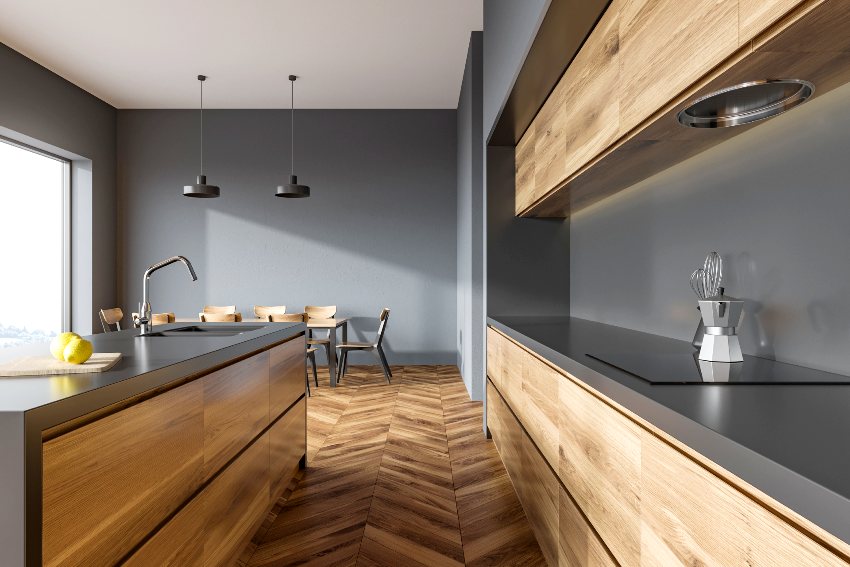
However, although having a shiny surface, polyvinyl laminates are not as reflective as acrylic, giving the finished product a more muted appearance.
Polyvinyl laminates are incredibly affordable, making them the perfect choice for those on a tight budget. Compared to acrylic, plastic laminates can tolerate normal wear and tear more readily. Thus, they don’t need much care and are simple to clean with a soft, wet cloth soaked in a moderate detergent.
These laminates are flexible and resistant to corrosion, termites, scratches, stains, and water. Due to these factors, polyvinyl laminates outperform acrylic cabinets in terms of toughness and longevity.
Acrylic Finish
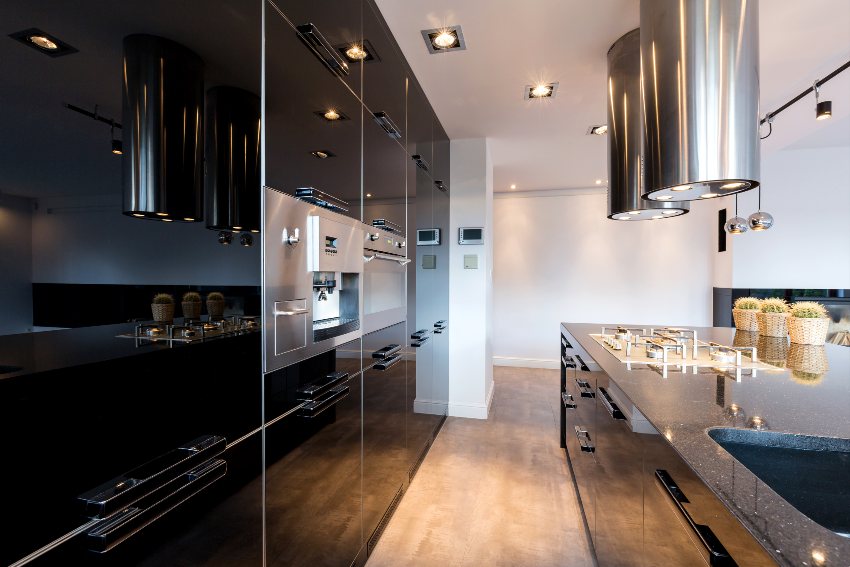
However, because of color differences, updating these finishes might take a lot of work. It costs more than a polyvinyl chloride laminate finish because of this.
Polyvinyl chloride and acrylic coatings compare well in many areas. Acrylic finishing, a high-gloss alternative, is more aesthetically pleasing than vinyl polymer laminates.
There is no disputing, however, that polyvinyl laminates are less expensive than acrylic coatings. Therefore, choosing a finish will require you to consider three things: the aesthetic you want, your capacity to maintain it, and the affordability.
PVC Foam Cabinet

Polyvinyl foam boards weigh relatively little. Therefore, it is straightforward, and handling and shipping are less demanding. It is simple to drill, saw, screw, bend, glue, and nail, just like plywood.
Polyvinyl foam boards can withstand dampness. Due to its low water absorption capacity, it is simple to maintain. The best feature of vinyl compound foam boards is that they come in matte and glossy surfaces that may be utilized right away for kitchen storage cabinets.
The pantry organizers made of foam polyvinyl compound are more robust and sturdy than wooden ones. Foam board-based vinyl plastic kitchens are a dependable and exceptional material for culinary storage units.
PVC Outdoor Cabinets
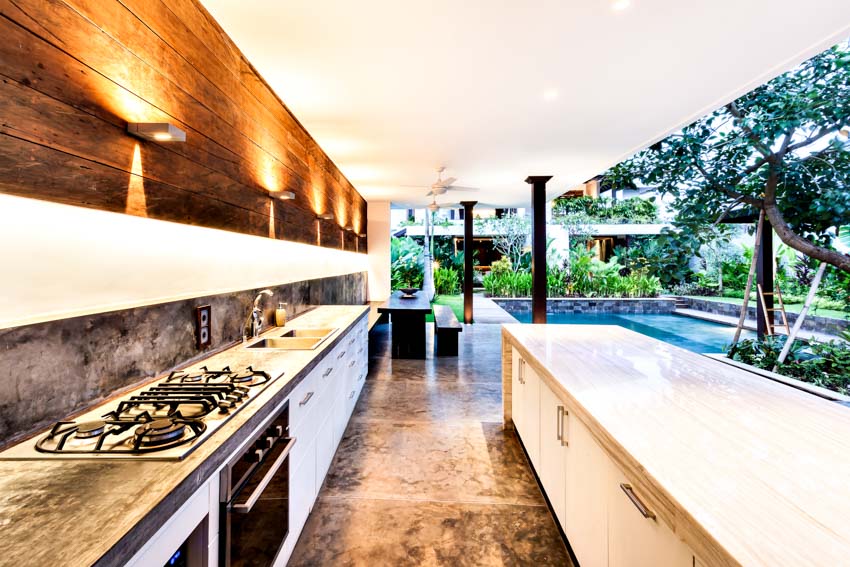
Vinyl polymer is completely waterproof and will not rust or discolor. However, cheaper polyvinyl chloride polymer or vinyl kitchen cabinets may distort when temperatures change dramatically and are vulnerable to color fading from extended UV exposure.
You should choose a premium brand if you use vinyl plastic cabinets for your outdoor kitchen design. Some manufacturers use cutting-edge high-density technology that flawlessly mimics genuine wood’s natural color and feel without the upkeep and degradation associated with wood cabinetry.
The only thing you need to do to clean them is using a hose or pressure washer since they are entirely waterproof. They are also resistant to sun, rain, ocean, and snow.
PVC Over Wood Cabinets
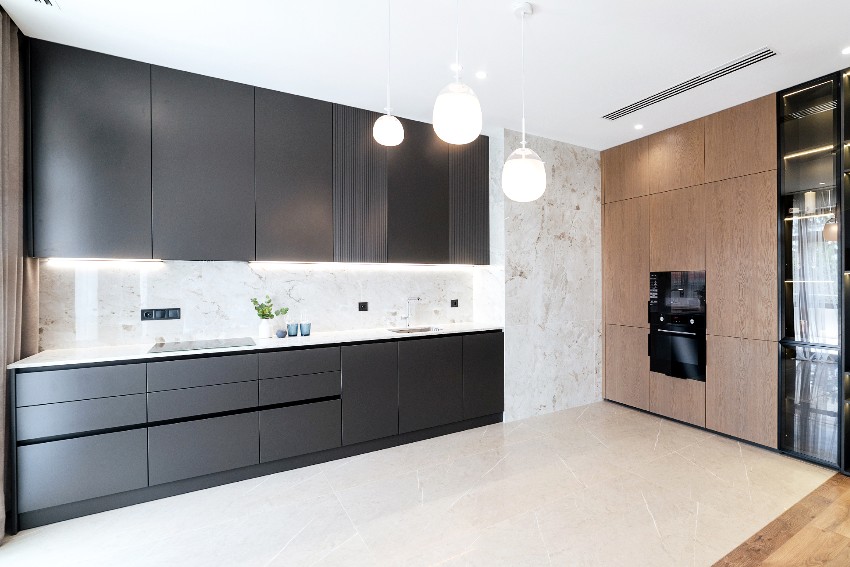
Solid wood is more costly, more challenging to install, prone to dampness, and more difficult to repair. Hardwood boards offer more colors, designs, and textures than polyvinyl compound boards.
Vinyl polymer over wood storage spaces may bond together using specific products. Many polyurethane adhesives and sealants may be employed, providing a more powerful, longer-lasting bond than a hot glue solution.
Another long-term solution is to bind the polyvinyl resin over the wooden components mechanically. By far, mechanically attaching the two materials is the most long-lasting approach to getting polyvinyl resin and wood to bind.
Installation Costs for PVC-Made Cabinets
Vinyl plastic kitchen cabinet designs are a cost-effective alternative to other regularly used modular kitchen cabinet materials. For semi-custom and stock types, vinyl plastic kitchen storage units typically cost between $160 and $380 per linear. Custom cabinetry may cost up to $1,000 per linear foot.
The least expensive solutions are often pre-assembled or stock cupboards. The typical price per linear foot may vary from $100-$180. The optimum kitchen cabinetry for a standard 10 x 12-foot or 10 x 10-foot room is pre-assembled vinyl polymer cupboards.
Homeowners with a bigger budget might consider custom cabinetry. You may enhance your custom kitchen’s décor by working with vinyl polymer kitchen cabinet designers to incorporate outstanding features. You may reduce the cost if you undertake a DIY project using vinyl resin.
Painting PVC Cupboards
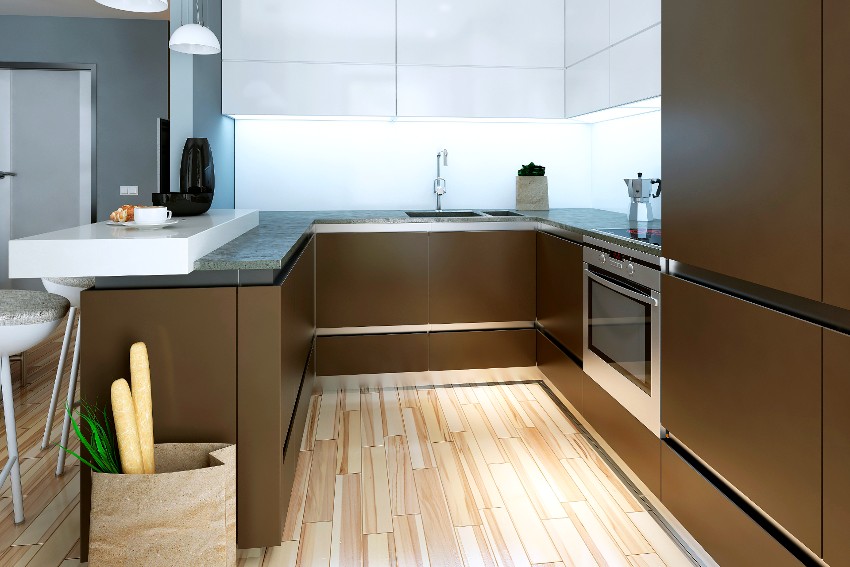
1. Break it down. Use a screwdriver to disassemble the cabinetry, NOT a hammer. Before you begin removing screws, take a photo of how the cabinetry and drawers appeared.
2. Scrub the surfaces. Clean the surface of the cabinet doors and drawer fronts thoroughly.
3. Scuff and sand. Sand any cabinet surfaces completed using 220-grit sandpaper to improve the paint adhering to the vinyl polymer cabinet.
4. Use a primer. You may use various primers on vinyl resin, but oil-based primers are the most secure option. Give the cabinet parts at least an hour or two to dry.
5. Time to paint the kitchen cabinets. Consider long-lasting acrylic latex paint in the color of your choice when deciding to paint kitchen storage unit.
6. Apply a clear coat if necessary. To add this extra layer of protection, give a light coating of clear polyurethane varnish to the vinyl polymer cabinet surfaces.
7. Rebuild your vinyl plastic kitchen cabinets. Using a screwdriver, replace each item you removed. Make use of the earlier photos you shot for help!
Kitchen Cabinets PVC Vs. Wood
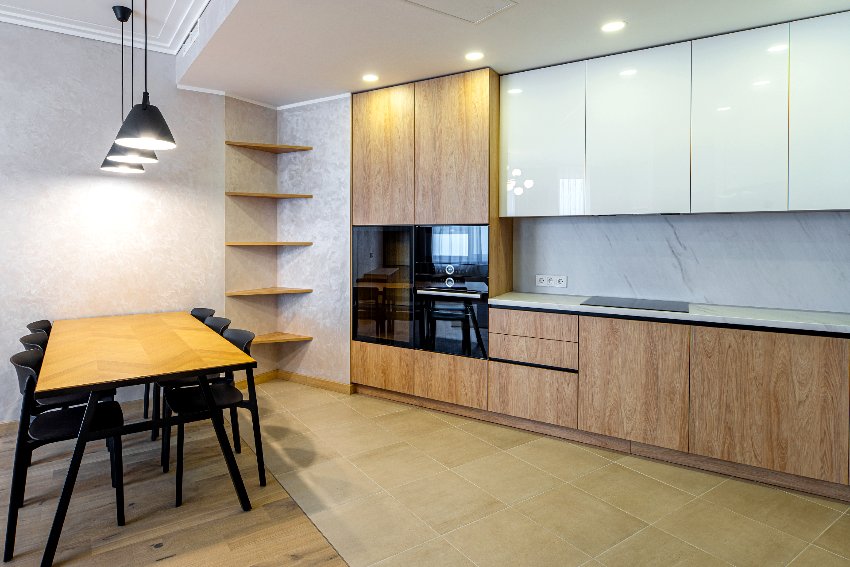
Vinyl resin material may also tolerate significant heat damage and some amounts of surface degradation. Maintenance of vinyl polymer cupboards, drawers, shelves, and so on is simple and easy to clean.
On the other hand, wood lends a contemporary but refined aspect to the kitchen; it exudes elegance and invites nature into the house. It is fashionable and beautiful, providing a sense of royalty to the kitchen.
But unlike vinyl polymer, the most significant drawback of wood is upkeep. Natural wood may deteriorate when exposed to excessive moisture, especially in humid environments. Unique solutions or oils are also required to maintain the surface appearance.
Melamine Vs. PVC Cabinets

In addition to being used widely in homes. It also makes partitions, protective coatings, furniture, doors, and windows, as well as in manufacturing land and water vehicles.
Melamine is a polymeric substance that has widespread use in the plastics industry because of its distinctive manufacturing techniques. One coating used to cover wood products like MDF is low-pressure melamine. See melamine kitchen cabinets pros and cons here.
These coatings shield MDF from various elements, including moisture, heat, and scratches. The drawback of high-pressure laminates is their extreme stiffness and fragility. This veneer material cannot have a glossy appearance.
Are Polyvinyl Chloride Cabinets Safe?
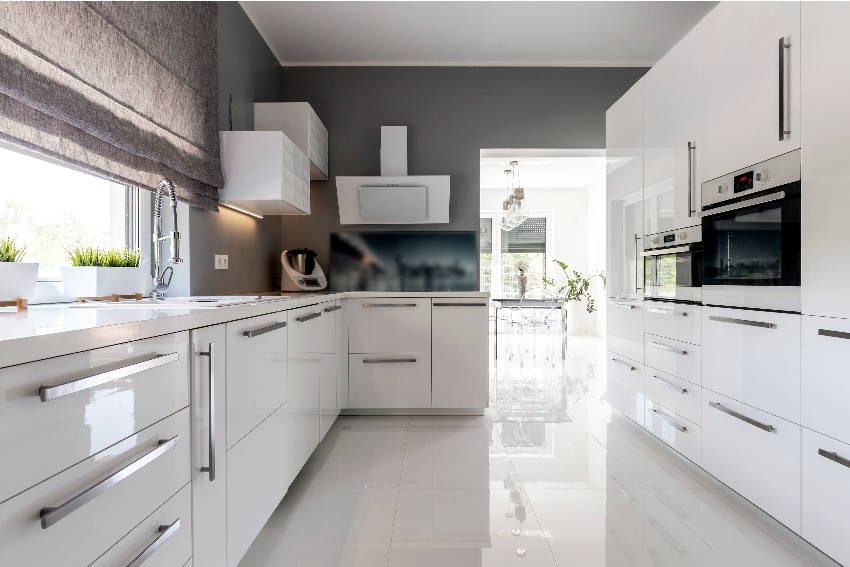
Vinyl polymer foam boards are non-toxic, chemically and corrosion-resistant, and suitable for culinary storage units. It is a sturdy substance that can withstand the abrasion that often occurs in kitchens.
Vinyl polymer is unquestionably one of the most outstanding options for your kitchen pantry. It has a contemporary appearance, is available in various colors and designs, is safe, budget-friendly, and provides long-term sustainability.
Visit our gallery of lacquer kitchen cabinets for more design ideas.

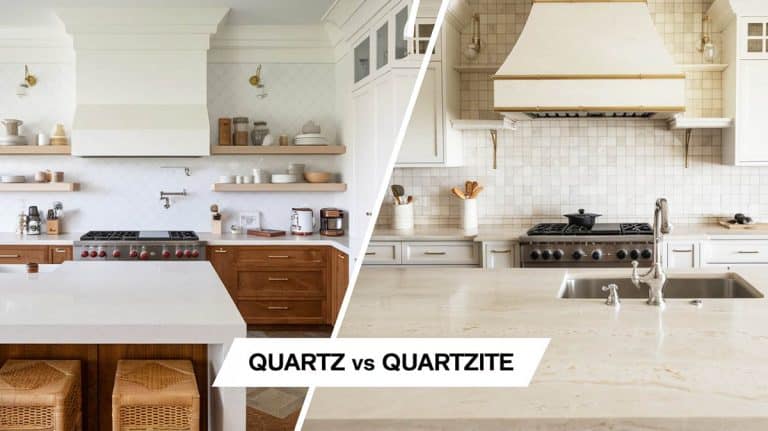
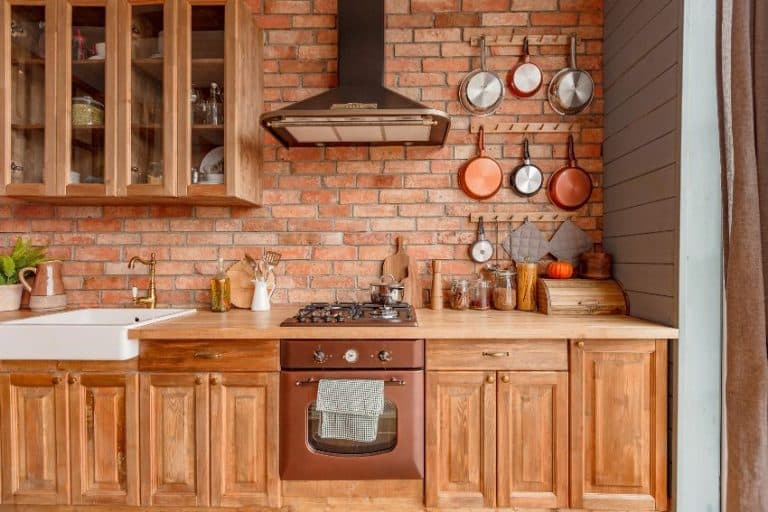
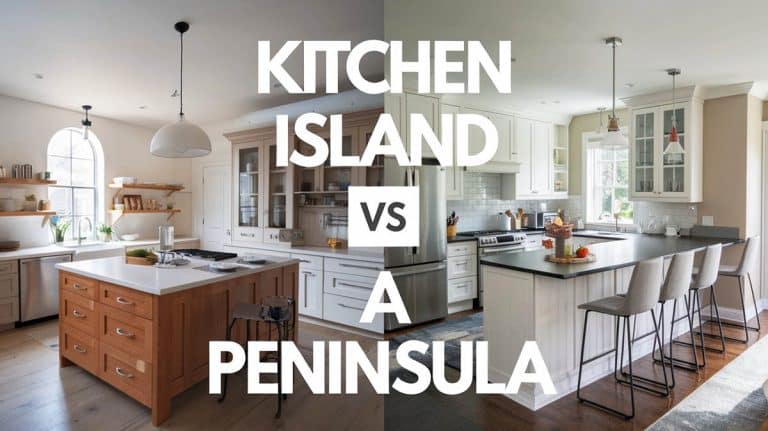
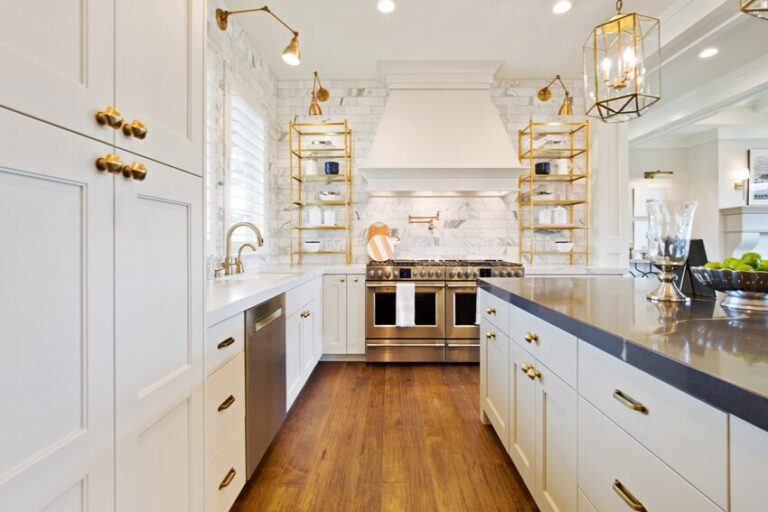
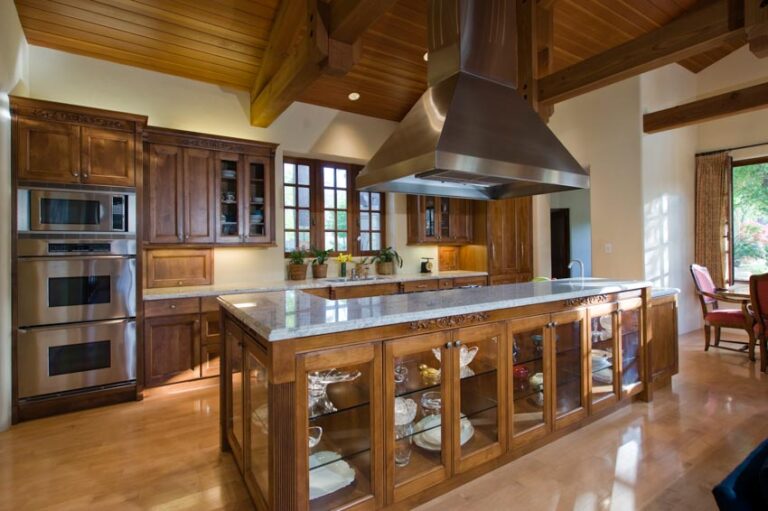
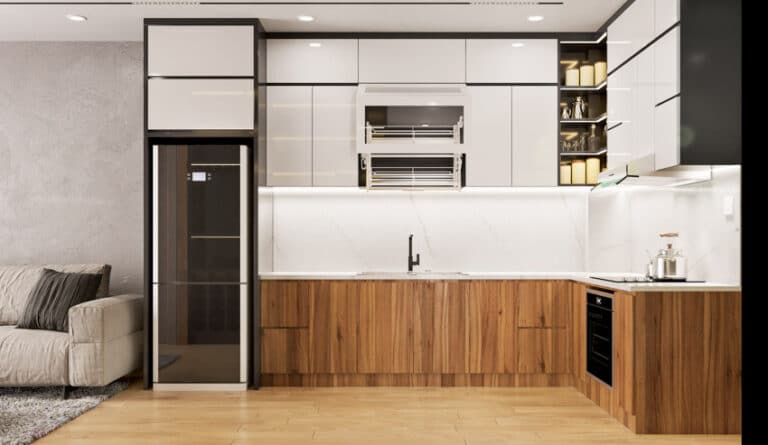
Hello,
Do you guys do commercial projects? I have a need for PVC cabinets at a university. I can send the dwgs to you.
Hi Amy, thank you for the question. Unfortunately, we do not do commercial projects fabrication and installation. Best of luck with you remodel project.
I am having a hard time finding PVC cabinet makers in the US. Any help?